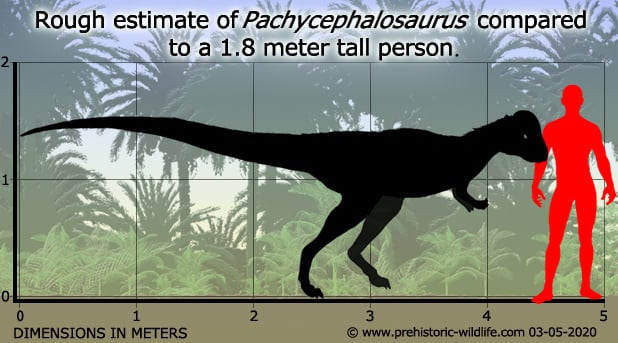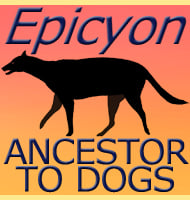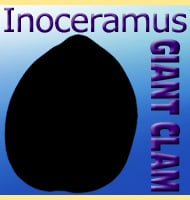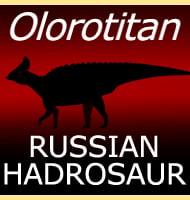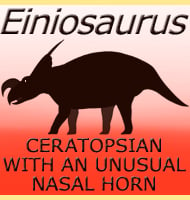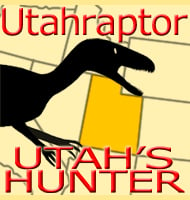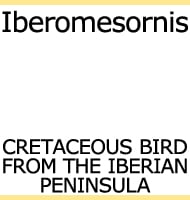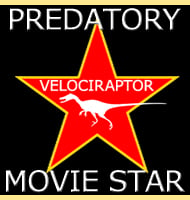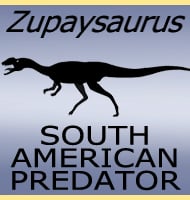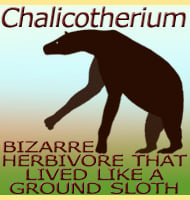In Depth
Once again one of the most famous dinosaurs of all time is actually represented by some of the most incomplete fossil material. To date Pachycephalosaurus is only represented by skull material; the actual appearance of the body so often seen in restorations is actually based upon the common form seen in more complete relatives. Although it may seem strange that a dinosaur genus based upon such few remains should become so popular, there are other very famous genera that are also based upon largely incomplete remains, with Ankylosaurus and Spinosaurus being just two such examples.Pachycephalosaurus as a dinosaur
The reason why Pachycephalosaurus has persevered to become one of the most famous and best loved dinosaurs is because of the very thick dome that grew on top of its skull. This dome grew to be made of bone almost as much as twenty-five centimetres thick and seems to have grown to protect the brain. This has led to the popular depiction of Pachycephalosaurus head butting one another during dominance contests and possibly even head butting predators to defend themselves. This supposed behaviour is also part of the reason why Pachycephalosaurus has become so popular, though today it is an idea that has been questioned.
The biggest source of the controversy regarding the head butting theory for Pachycephalosaurus comes from a 2004 study by Goodwin and Horner, though there are other detractors to the head butting theory. One of the main concerns is that the bone structure of the dome is not entirely solid but kind of spongy inside. Although this would have certainly reduced the weight of the dome structure and subsequent stress supporting it, it is believed that it would have effectively crumbled under the force of successive blows. The shape of the dome has also been criticised for not being the right form for effective head on head blows and although the skeleton of Pachycephalosaurus is not known, its relatives are all known to have poor neck and back support for initiating head on head blows.
Despite these misgivings however there have been studies that have lent further support to the idea that Pachycephalosaurus used its head as a weapon, such as Snivley and Cox in 2008, Lehman in 2010 and Snivley and Theodore in 2011. These studies centre on new analysis of Pachycephalosaurus skulls including biomechanical models that indicate that the heads would have been quite effective at delivering blows. However it should be pointed out at this point that the vast majority of palaeontologists who believe that Pachycephalosaurus was a head butter do not think that it butted head to head.
A reasonable alternative to the head butting theory is actually the flank butting theory. What this means is that rather than bash heads, two Pachycephalosaurus would square up to one another and then try to use their heads to hit each other in the sides of the body. This idea is more popular amongst palaeontologist because it gives some explanation as to the form of the dome while also taking into account its apparent lack of suitability for striking hard objects.
Therefore the most commonly accepted scenario for Pachycephalosaurus is that an individual would start life with a flat head, and then have the skull changing form into that of the dome like structure that we know. This would signal the sexual maturity of an individual and serve as a visual display with perhaps the largest and most developed domes belonging to the most mature individuals. When visual signals and perhaps audial calls did not work to settle the rivalry, two individuals struck each other in the sides with their domed heads until one of them gave in and conceded victory to the other.
Because of the lack of skeletal remains it is hard to know much more than what we already do about Pachycephalosaurus. The size of the skull however does actually indicate that Pachycephalosaurus is the largest currently known pachycephalosaurid. The precise feeding behaviour of Pachycephalosaurus is also uncertain because of the very small teeth. The jaws however are also short and end in a beak which might suggest that Pachycephalosaurus was more of a selective browser, only picking off the parts of plants that were the most palatable. Pachycephalosaurus has also been considered to have included invertebrates like insects into its diet. Pachycephalosaurus is also believed to have had very good vision, with large forward facing eyes that would have allowed Pachycephalosaurus to have stereoscopic vision. What this means is that Pachycephalosaurus would have had the ability to effectively gauge distances in front of it with a high degree of accuracy.Classification issues
Today Pachycephalosaurus is the type genus of the Pachycephalosauridae, which means that all dinosaur genera similar in form to Pachycephalosaurus are referred to as pachycephalosaurids (though further sub-divisions can and are sometimes made depending upon the context of the study). However when Pachycephalosaurus was first named it was actually described as a troodont, a member of the troodontidae. The type genus of this group was Troodon, a genus that at the time of the description of Pachycephalosaurus was only known by teeth. These teeth were similar to those seen in what were to become pachycephalosaurids, so it seemed correct at the time.
Later in the in the twentieth century however, the teeth of Troodon were found to be a precise match for another dinosaur genus called Stenonychosaurus, a saurischian theropod that although bipedal was very different to pachycephalosaurids. With the realisation that Troodon was not a pachycephalosaurid it could no longer be used to establish the type genus of the group. With the next genus name having seniority technically being Pachycephalosaurus, this genus became the type used to establish the new group Pachycephalosauridae in 1974.
In the above paragraph it was stated that Pachycephalosaurus has technical seniority to be used as the type genus of the group. This is because the oldest Pachycephalosaurus fossils were actually first described by Joseph Leidy in 1872 as a different genus called Tylosteus. Tylosteus was based upon the description of what would later be identified as the squamosal bone from a Pachycephalosaurus skull, but when first described it was believed to have been a piece of dermal armour from some kind of armoured reptile. Fast forward to the late twentieth century and a new study of this bone by Donald Baird revealed its real identity, but also raised a troubling prospect. Under standard rules and procedures governed by the ICZN (International Commission on Zoological Nomenclature) the first name established usually has priority over any subsequent names; however Baird actually managed to get a special exception made for Pachycephalosaurus.
There is a special clause where if it can be proven that the second name for a genus has been in regular scientific use, while the first name has not (in essence being almost forgotten) then an application for protected status can be made for the second name. At the time of this discovery Pachycephalosaurus was already one of the most popular dinosaurs talked about and was now the defining type genus of the Pachycephalosauridae. Tylosteus was virtually unknown with perhaps only a handful of paleontologists and museum curators knowing about it and none of them writing about it. For these reasons the ICZN granted Pachycephalosaurus protected status as a nomen protectum (literally ‘name protected’) in 1985. Although this is a very rare sequence of events, exactly the same argument was successfully made for the most famous dinosaur genus of all time, Tyrannosaurus, when it was realised that Tyrannosaurus was actually the second name given to this genus.
Pachycephalosaurus will remain a valid genus, however it is possible that other pachycephalosaurid genera may end up getting absorbed into it. The main two genera in question are Stygimoloch named in 1983 and Dracorex named in 2006. Neither Stygimoloch nor Dracorex have the large domes of the skull of Pachycephalosaurus, but there is compelling speculation that explains how all of these genera are related. First of all, all three of these genera are known to have lived at the same time and locations as one another. Dracorex and Stygimoloch are both represented only by the remains of juveniles, while Pachycephalosaurus however is only known by the remains of adults. Wider study of pachycephalosaurids in general seems to point to a continuing trait where all juveniles had flat heads, while the dome like structure seen in adults only developed when an individual became fully mature. This is backed up by further study that the bones of pachycephalosaurid skulls could change considerably in form as an individual matured.
Unfortunately while many palaeontologists are of the opinion that both Stygimoloch and Dracorex should be regarded as juvenile Pachycephalosaurus, there are not currently any transitional fossil forms that could conclusively prove this without doubt. To blur things even further, the squamosal bone fragment once described as Tylosteus has since been considered to actually belong to Dracorex. If correct then this would make the protected name status for Pachycephalosaurus unnecessary, but it could also be a moot point if Dracorex is indeed based upon juveniles of Pachycephalosaurus.
Further Reading
– A new species of troodont dinosaur from the Lance Formation of Wyoming – Proceedings of the United States National Museum 79 (9): 1–6 – Charles W. Gilmore – 1931. - A study of the tro�dont dinosaurs with the description of a new genus and four new species, Barnum Brown & Erich Maren Schlaikjer - 1943. – New data on pachycephalosaurid dinosaurs (Reptilia: Ornithischia) from North America – Canadian Journal of Earth Sciences 25: 462–472 – Peter M. Galton & Hans-Dieter Sues – 1983. – Pachycephalosaurus Brown & Schlaikjer, 1943 and Troodon wyomingensis Gilmore, 1931 (Reptilia, Dinosauria): Conserved – Bulletin of Zoological Nomenclature, 43 (1) – ICZN Opinion 1371 – 1986. – Agonistic behavior in pachycephalosaurs (Ornithischia: Dinosauria): a new look at head-butting behavior – Contributions to Geology 32 (1): 19–25 – Kenneth Carpenter – 1997. – Cranial histology of pachycephalosaurs (Ornithischia: Marginocephalia) reveals transitory structures inconsistent with head-butting behavior – Paleobiology 30 (2): 253–267 – Mark Goodwin & John R. Horner – 2004. - Structural mechanics of pachycephalosaur crania permitted head-butting behavior, E. Snivley & A. Cox - 2008. – Extreme Cranial Ontogeny in the Upper Cretaceous Dinosaur Pachycephalosaurus – PLoS ONE 4(10) – J. R. Horner & M. B. Goodwin – 2009. - Pachycephalosauridae from the San Carlos and Aguja Formations (Upper Cretaceous) of west Texas, and observations of the frontoparietal dome, T. M. Lehmen - 2010. - Common Functional Correlates of Head-Strike Behavior in the Pachycephalosaur Stegoceras validum (Ornithischia, Dinosauria) and Combative Artiodactyls, E. Snivley & J. M. Theodor - 2011. K. Carpenter. ed. – Cranial Pathologies in a Specimen of Pachycephalosaurus – In Farke, Andrew A. PLoS ONE 7 (4) – J. E. Peterson & C. P. Vittore – 2012. – Distributions of Cranial Pathologies Provide Evidence for Head-Butting in Dome-Headed Dinosaurs (Pachycephalosauridae) – PLoS ONE 8(7) – J. E. Peterson, C. Dischler & N. R. Longrich – 2013. – The early expression of squamosal horns and parietal ornamentation confirmed by new end-stage juvenile Pachycephalosaurus fossils from the Upper Cretaceous Hell Creek Formation, Montana. – Journal of Vertebrate Paleontology. 36 (2). – Mark B. Goodwin & David C. Evans – 2016.
